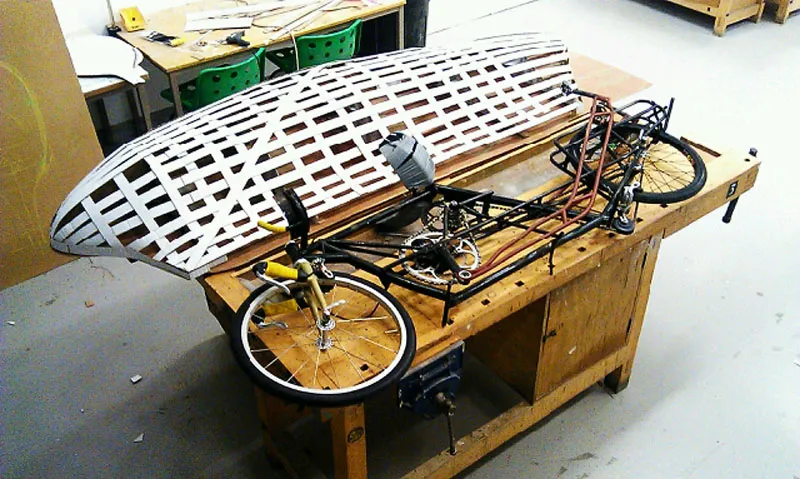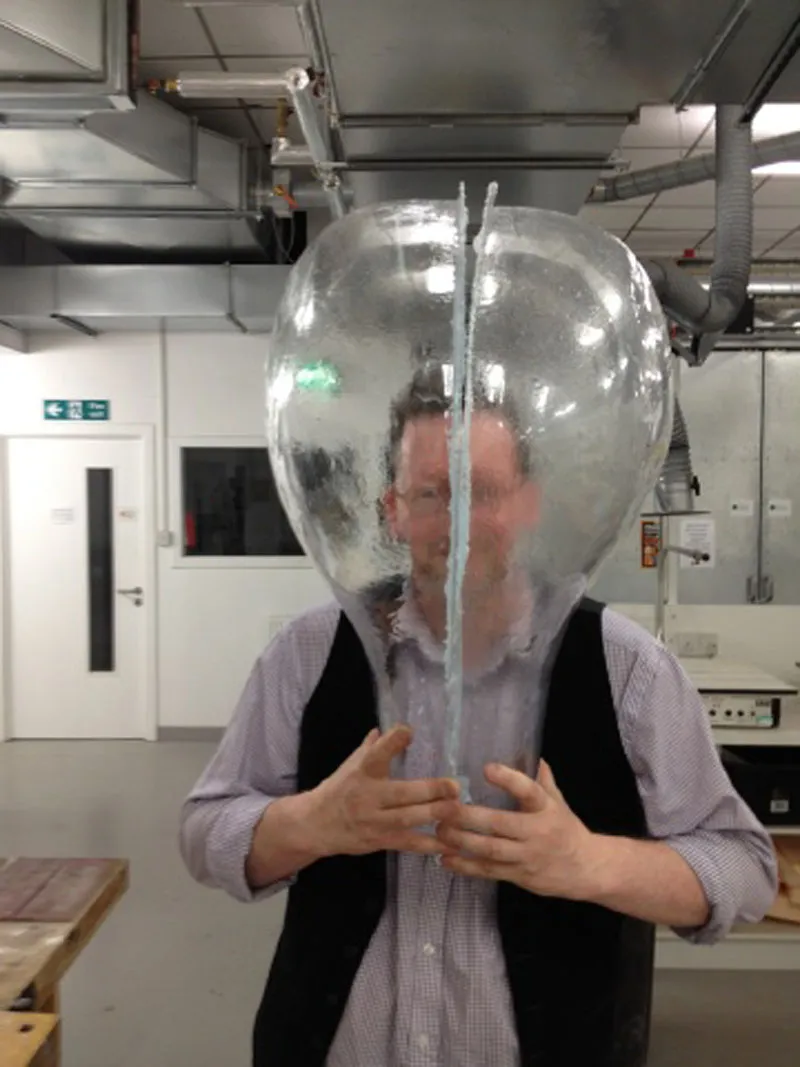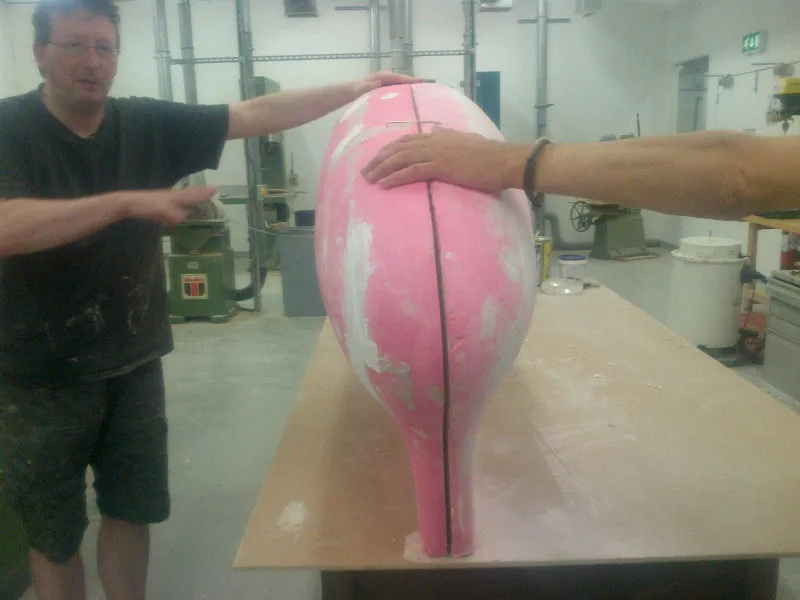This article was originally published on Humansinvent.com
The last time we visited Graeme Obree was in May 2012 at his home in Saltcoats, Scotland. He spoke about his design philosophy behind his hand-crafted bike and why he was resisting any lab or research assistance. He had finished the main frame at that time, and was eager to get his kitchen cum garage back to normal.
We returned at the end of August to see the finished bike, or Beastie as he calls it, and to see how Obree’s preparations to break the human-powered land speed record were progressing. His unique creation isn’t quite finished, which means an attempt in America isn’t possible, however Obree is looking forward to mounting an attempt at the human-powered vehicle land speed record on British soil in the next month. A bike designed and built in Britain, that could break the record on British soil.
As we have said before, Obree is a man with a history of being marginalised for his innovation, but he is ready to challenge conventional engineering once more with his unique bike design, that could reach speeds up to 100 mph. Find out the latest on his record attempt from the man himself.
Graeme, thanks for talking to us again. What stage are you at with the bicycle? And, what is the plan for the attempt?
At this stage, sadly, traveling to America to take part in the official meeting at Battle Mountain is off. We are still not happy with the bike to be honest. So, we need to make a few tweaks to the bike. It is nearly there, mechanically we have needed to make some adjustments but the main issue is that we have run into some production issues while crafting the fairing, so there is no point going for this when the bike isn’t perfect. After doing some initial tests I found I had to move the shoe-plates as well. To be honest there needed to be a whole lot of re-positioning on it. I have also decided to fit an elbow guard. The elbow can drift into parts of the bike that are spinning forward. The idea now is, that I can rest my arms in the elbow guards so I can concentrate on steering and maintaining my position.
I also made the decision to go with a clear skin so people will actually see what is going on, they will see the engine. You normally just get a black inanimate object shooting up the road, but this means you can see the man in it, the engine powering it. It is going to look amazing, and actually when you see the frontal area and the skin surface of what you actually have there, then you can see that it has to be one of the smallest bikes ever created, in terms of frontal area and skin surface that is. And that is crucial. So, I am really happy with its aerodynamics at present.

Obree's Beastie during testing before the first shell was put on
Where are you looking to attempt the record now that America is off?
Well, we are all dressed up with nowhere to go. To be honest, I am happy it will be a British attempt now. Designed in Britain, made in Britain and broken in Britain. This also means that we can go for the world human-powered land speed record, and also the British human-powered land speed record. Now we are simply looking at venues. I think our best bet will be an airport somewhere in the United Kingdom, and there are few possibilities that are opening for us. We will start by choosing one and doing some testing – then we will take it from there on which destination we use. What we need is a quick surface with around a 2 mile runway. So, in theory, there are plenty of options.
Unable to load media
Graeme Obree talking earlier this year about his record attempt (courtesy: Humans Invent)
What are the most important factors to consider when picking a venue?
Well, when picking a venue you are always going to make comparisons with Battle Mountain. What made that such a good location for the human-powered speed record attempt was firstly the surface. It’s fast. The next thing is it is 5000 ft above sea level, plus it has something like a 6 degree slope [ed: it's 0.6%] in your favour. In an engineering journal I read, they said that Battle Mountain is worth 156 watts extra in energy, and that is just the slope, then the surface is actually purposefully built for the record attempt, so that has be worth another fraction in terms of surface resistance.
We have to accept that we aren’t going to get as good as Battle Mountain. But, we can still get close. What we need is a flat surface, with no blemishes or joins in it, ideally the smoothest tarmac surface we can find in the UK. It needs to be 2 miles long so we can get it up to speed, and of course, it needs to be in a straight line. So, it isn’t an impossible task. It’s not Battle Mountain, instead it will be a purely British attempt. I like that. The one thing is we cannot have this running into the winter. We have to make the most of the good weather this autumn. So we will be looking at giving it our best shot within the next month.
As you say the bike is nearly there. It looks great. You have spoken before about the method behind your design strategy. Could you talk to me about the unique pull / push pedal action you will be using?

The Glasgow School of Art helped Graeme mould the shell
The frontal area is minimal since the feet just miss each other on the way past which means the width at the back is the minimum possible so the vehicle can be tailed of short. Also it means the knees are closer together and partially share the same space at the bottom of the stroke which means that the skin can be tucked in closer, and that means less frontal area.
In order to achieve this a direct drive to the rear wheel is replaced by a drive to chainwheel which then connects via another chain to sprocket which turns a bigger chainwheel which in turn connects to the rear wheel. Some of the energy is consumed in this mechanism but the aerodynamic advantage should be much larger than the lossage. The push pull arrangement means that the knees do not dip as far as would be the case with a circular movement, again reducing the frontal area and air resistance.

